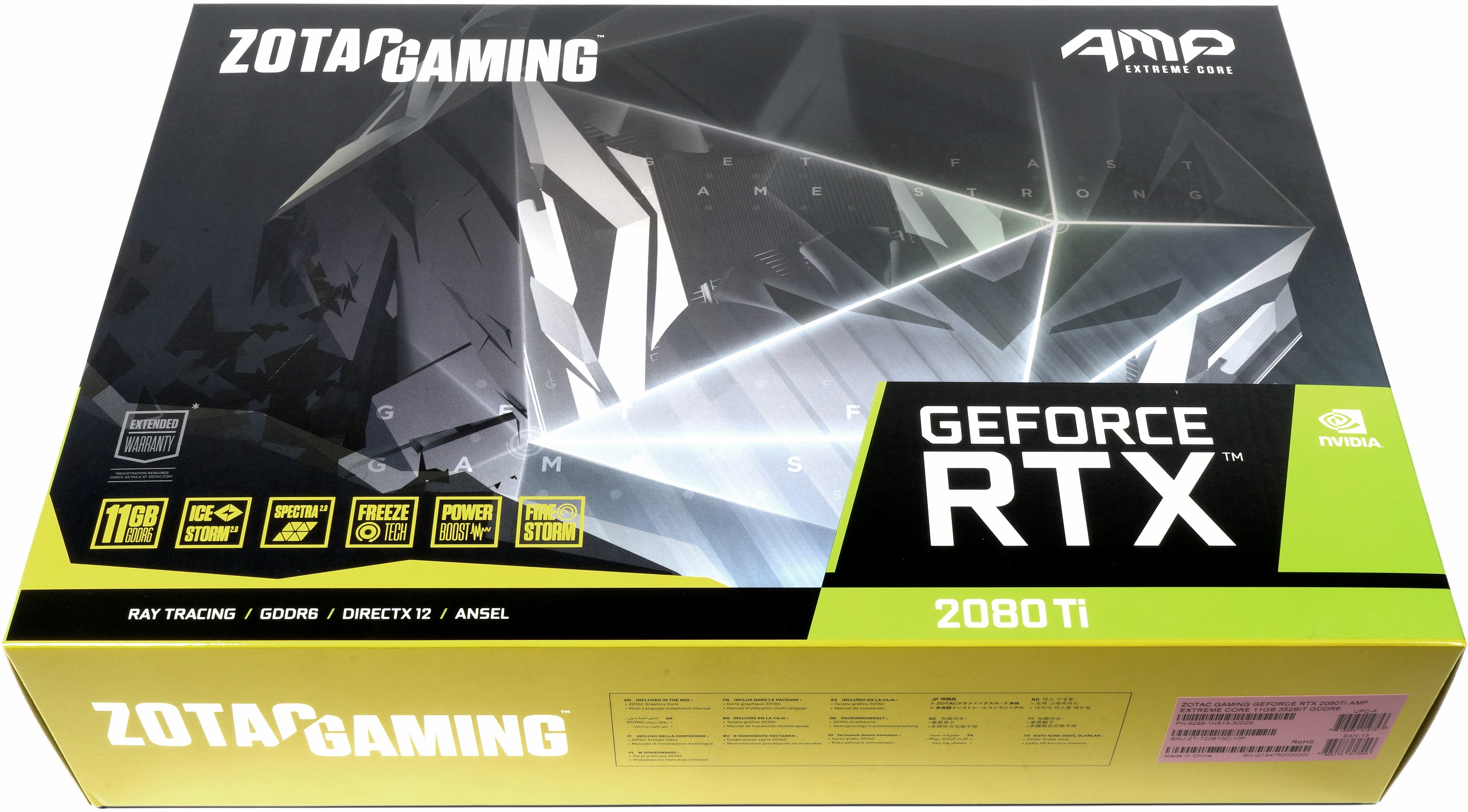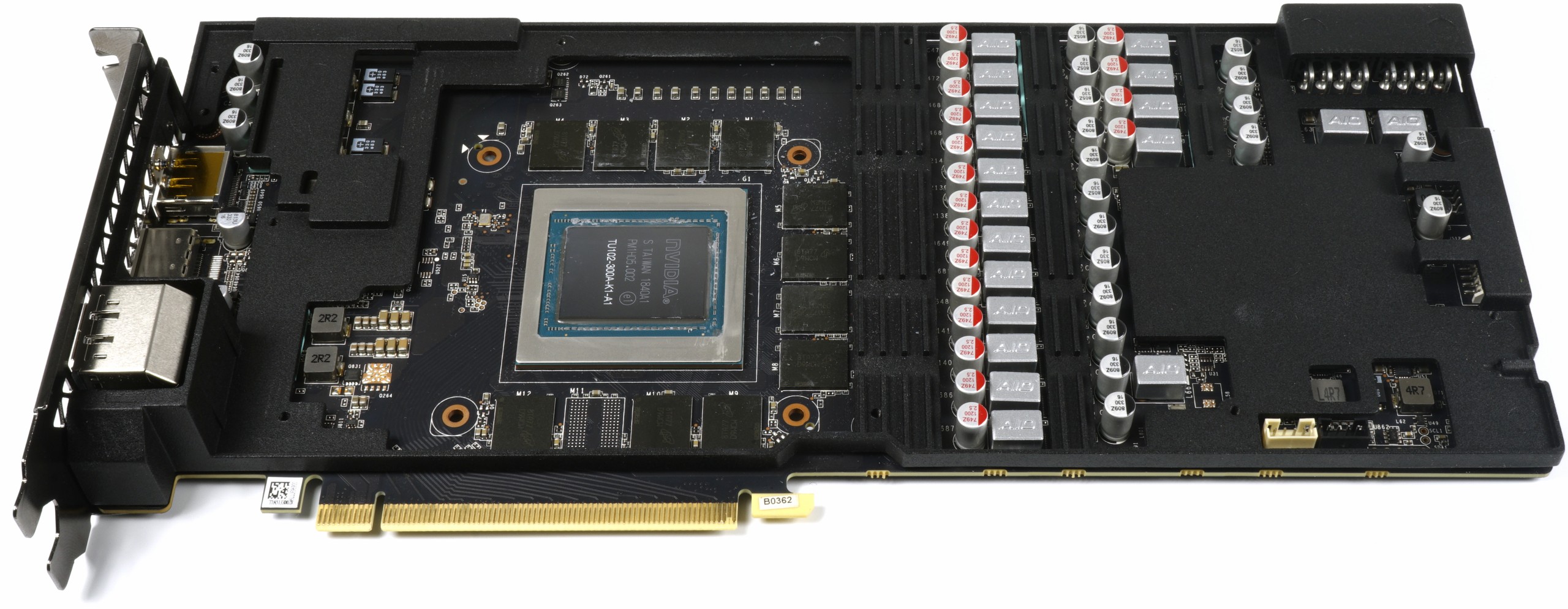 One finds again and again possibilities to further improve a product that is good in itself and to punish the supposed greed of the accountants with only a few cents of material use nonchalantly. Far more than 90°C below the memory you don't have to find really nice now, but why did the dear Lord God create the so-called thermal guide pads again? Exactly, for that! So it's going to be exciting. By the way, thanks also go to the German PR of Zotac for the quick support.
One finds again and again possibilities to further improve a product that is good in itself and to punish the supposed greed of the accountants with only a few cents of material use nonchalantly. Far more than 90°C below the memory you don't have to find really nice now, but why did the dear Lord God create the so-called thermal guide pads again? Exactly, for that! So it's going to be exciting. By the way, thanks also go to the German PR of Zotac for the quick support.
Since, thanks to the personal commitment of the US editor-in-chief ("Just buy it!"), I can no longer get my own samples from the Zotac headquarters, which I could also reconstruct irreversibly (because they had not had to rotate between the entire editorial offices), I have to this time, unfortunately, for precisely these reasons, do not use a mechanical conversion of the backplate. That is a pity and only half the rent, but I cannot leave the other card to my colleagues here in Germany.
But the partial mod shown today is also completely sufficient to determine the direction in which the train should go. Of course, I do not want to prejudge the complete review completely, but this separate conversion clearly goes beyond the scope of a normal review. Does anyone remember my article "EVGA GeForce GTX 1080 FTW with cooler mod and new BIOS in test"? The parallels are remarkable. So, let's go!
Starting position: high storage temperatures
The measured 92°C on the back of the board under the memory modules is not nice, but completely superfluous if you look at the cooler as such. But first we look at the still image after more than 15 minutes of heating in the closed housing during the mandatory stress test:

For the very curious I also attached the video, which shows the first 5 minutes of the warm-up in the time-lapse (x5) and then the stabilized result after 15 minutes.
What is the problem?
If you look at the naked board of the card, you can also see the very large, uncooled area between voltage converters and memory. If so, then this is really the best way to give away useless potential.
Zotac (unfortunately) puts on a kind of cooling frame in the sandwich between the radiator and the board and lets the fans inflate it. However, there is no direct contact with the cooler. Why you don't use a VRM heatsink with cooling other areas will probably only be answered by the accounting department.

If you take off the frame, you hardly trust the eyes, because only the voltage converters are cooled directly via thermal conductive pads. The large bridge between the recess for the coil and the capacitor series, as well as the memory modules, is completely unused and cools nothing at all.
This is exactly where I will start the conversion. The backplate, which was not actively included in the cooling, also invites you to rebuild, but unfortunately I am not allowed to do that. I had given the reasons. The inside is glued with a foil, which you would have to cut out in the appropriate place in order to be able to place a suitable pad directly behind the memory.
If you own such a card and only trust some of my conversions, you could even run this mod completely without any possible loss of warranty, since the backplate is not protected with seals and can be unscrewed directly without completely disaseing the card. Must.
On the next page I come to the actual conversion and also show that you can create a remarkable temperature reduction if you really want to achieve great things with a small money approach.
Test system and measurement methods
I have already described the new test system and the methodology in the basic article "How we test graphics cards, as of February 2017" (English: "How We Test Graphics Cards") in great detail and therefore, for the sake of simplicity, now only refers to this detailed Description. So if you want to read everything again, you are welcome to do so.
If you are interested, the summary in table form quickly provides a brief overview:
| Test systems and measuring rooms | |
|---|---|
| Hardware: |
Intel Core i7-8700K x 5 GHz MSI MEG Z390 Ace 16 GB KFA2 DDR4 4000 Hall of Fame 1x 1 TByte Toshiba OCZ RD400 (M.2, System SSD) 2x 960 GByte Toshiba OCZ TR150 (Storage, Images) Be Quiet Dark Power Pro 11, 850-watt power supply |
| Cooling: |
Alphacool Ice Block XPX 5x Be Quiet! Silent Wings 3 PWM (Closed Case Simulation) Thermal Grizzly Kryonaut (for cooler change) |
| Housing: |
Lian Li PC-T70 with expansion kit and modifications Modes: Open Benchtable, Closed Case |
| Monitor: | Eizo EV3237-BK |
| Thermography: |
Optris PI640, infrared camera PI Connect evaluation software with profiles |
| Operating system | Windows 10 Pro (1809, all updates) |




































Kommentieren